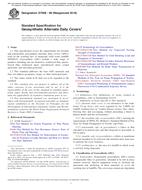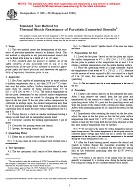1.1”Purpose”’The purpose of this practice is to define good commercial and customary practice in the United States of America for conducting an environmental site assessment2 of a parcel of commercial real estate with respect to the range of contaminants within the scope of the Comprehensive Environmental Response, Compensation, and Liability Act (CERCLA) (42 U.S.C. ””’9601) and petroleum products. As such, this practice is intended to permit a user to satisfy one of the requirements to qualify for the innocent landowner, contiguous property owner, or bona fide prospective purchaser limitations on CERCLA liability (hereinafter, the ”’landowner liability protections,”’ or ”’LLPs”’): that is, the practice that constitutes all appropriate inquiries into the previous ownership and uses of the property consistent with good commercial and customary standards and practices as defined at 42 U.S.C. ””’9601(35)(B). (See Appendix X1 for an outline of CERCLA”’s liability and defense provisions.) Controlled substances are not included within the scope of this practice. Persons conducting an environmental site assessment as part of an EPA Brownfields Assessment and Characterization Grant awarded under CERCLA 42 U.S.C. ””’9604(k)(2)(B) must include controlled substances as defined in the Controlled Substances Act (21 U.S.C. ””’802) within the scope of the assessment investigations to the extent directed in the terms and conditions of the specific grant or cooperative agreement. Additionally, an evaluation of business environmental risk (BER) associated with a parcel of commercial real estate may necessitate investigation beyond that identified in this practice (see 1.4 and Section 13).
1.1.1”Recognized Environmental Conditions”’The goal of the processes established by this practice is to identify recognized environmental conditions. The term recognized environmental condition means (1) the presence of hazardous substances or petroleum products in, on, or at the subject property due to a release to the environment; (2) the likely presence of hazardous substances or petroleum products in, on, or at the subject property due to a release or likely release to the environment; or (3) the presence of hazardous substances or petroleum products in, on, or at the subject property under conditions that pose a material threat of a future release to the environment. A de minimis condition is not a recognized environmental condition.
Product Details
- Published:
- 11/01/2021
- Number of Pages:
- 59
- File Size:
- 1 file , 590 KB
- Redline File Size:
- 2 files , 1.3 MB


